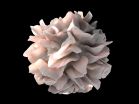(Press-News.org) When cancer strikes, it may be possible for patients to fight back with their own defenses, using a strategy known as immunotherapy. According to a new study published in Nature, researchers have found a way to enhance the effects of this therapeutic approach in glioblastoma, a deadly type of brain cancer, and possibly improve patient outcomes. The research was funded by the National Institute of Neurological Disorders and Stroke (NINDS) as well as the National Cancer Institute (NCI), which are part of the National Institutes of Health.
"The promise of dendritic cell-based therapy and other immunotherapies for brain cancer has been upheld for some time, but an important implication of this work is a demonstrated capacity to significantly improve the clinical impact of immunotherapy for patients with this very difficult disease," said Duane A. Mitchell, M.D., Ph.D., director of the Brain Tumor Immunotherapy Program at the University of Florida in Gainesville and co-lead author of the study.
Dendritic cells are specialized immune cells that normally capture microorganisms, and then migrate to the lymph nodes to prepare other immune players, such as T cells, to fight off the invaders.
Dendritic cells have been used for immunotherapy to target a variety of tumor types, including those that affect the brain. These cells are taken from the patient, engineered to express antigens from the tumor¬ to create a vaccine, and then injected back into the patient. Once in the patient, the engineered dendritic cells activate T cells, which can fight the tumor and also prevent it from coming back, via an immune memory response.
Dr. Mitchell and his colleagues wanted to know if increasing dendritic cell migration to lymph nodes would improve the effects of the vaccine. To test this idea, a group of glioblastoma patients was randomized to receive a tetanus booster shot before getting the tumor-antigen expressing dendritic cell vaccine. The booster was designed to set off an inflammatory response at the site of the vaccination, prepping the immune system for a larger battle. The other group of patients were injected with their own native dendritic cells instead of a tetanus shot, and then treated with the tumor-antigen expressing dendritic cell vaccine. Both sets of patients were treated with the vaccine which was being tested for effectiveness against glioblastoma.
The vaccine used in this study was targeted against cytomegalovirus (CMV). Studies have shown that CMV is found in glioblastoma tumors, but it is unclear if the virus causes tumors or contributes to disease progression. Glioblastomas are a devastating form of brain cancer with five year survival rates under 10 percent. From the time of diagnosis, average survival time is less than two years.
"The role of CMV in glioblastoma has been a controversial area of research for several years. These new findings, and especially the dramatic survival rates, suggest that the virus may be an effective target for immune therapy. The results presented by Dr. Mitchell and his colleagues should stimulate more basic research on CMV and its potential therapeutic role in brain tumors and possibly other cancers," said Jane Fountain, Ph.D., program director at the NINDS.
The results showed that administering a tetanus booster before the vaccine increased dendritic cell migration to lymph nodes and also had a significant effect on clinical outcomes. The patients who received the tetanus booster lived more than 36.6 months after diagnosis compared to an average survival time of 18.5 months in those who received dendritic cells alone.
"We did not expect that enhancing dendritic cell migration would be associated with such a dramatic improvement on clinical outcomes in our patients," said Dr. Mitchell.
Next, the investigators used a mouse model to determine how the tetanus booster increased dendritic cell migration to the lymph nodes. The results suggested that giving a booster shot to mice that have received the tetanus vaccine activated a recall response in the exposed T cells. Acting through a chemical messenger known as CCL3, those T cells increased dendritic cell migration to the lymph nodes, which ultimately enhanced the effect of the dendritic cell vaccine on tumor growth suppression.
"Dendritic cell vaccines targeting glioblastoma can be very effective by enhancing migration of dendritic cells. We now understand how we may improve outcomes for patients receiving this type of therapy," said Dr. Mitchell. He added that larger clinical studies need to be conducted to confirm these results.
In addition, more research is necessary to define the role of CMV in glioblastoma and further determine mechanisms to enhance efficacy of vaccines in cancer therapy.
INFORMATION:
This work was supported by grants from the NINDS (NS20023, NS067037) and the National Cancer Institute (CA108786, CA177476, CA134844).
References:
Mitchell et al. "Tetanus toxoid and CCL3 improve dendritic cell vaccines in mice and glioblastoma patients," Nature, March 11, 2015.
The NINDS is the nation's leading funder of research on the brain and nervous system. The mission of NINDS is to seek fundamental knowledge about the brain and nervous system and to use that knowledge to reduce the burden of neurological disease.
About the National Institutes of Health (NIH): NIH, the nation's medical research agency, includes 27 Institutes and Centers and is a component of the U.S. Department of Health and Human Services. NIH is the primary federal agency conducting and supporting basic, clinical, and translational medical research, and is investigating the causes, treatments, and cures for both common and rare diseases. For more information about NIH and its programs, visit http://www.nih.gov.
Boulder, Colo., USA - Unaweep Canyon is a puzzling landscape -- the only canyon on Earth with two mouths. First formally documented by western explorers mapping the Colorado Territory in the 1800s, Unaweep Canyon has inspired numerous hypotheses for its origin. This new paper for Geosphere by Gerilyn S. Soreghan and colleagues brings together old and new geologic data of this region to further the hypothesis that Unaweep Canyon was formed in multiple stages.
The inner gorge originated ~300 million years ago, was buried, was then revealed about five million years ago when ...
Latinos are the largest ethnic minority group in the United States, and it's expected that by 2050 they will comprise almost 30 percent of the U.S. population. Yet they are also the most underserved by health care and health insurance providers.
Latinos' low rates of insurance coverage and poor access to health care strongly suggest a need for better outreach by health care providers and an improvement in insurance coverage. Although the implementation of the Affordable Care Act of 2010 seems to have helped (approximately 25 percent of those eligible for coverage under ...
Could our reaction to an image of an overweight or obese person affect how we perceive odor? A trio of researchers, including two from UCLA, says yes.
The researchers discovered that visual cues associated with overweight or obese people can influence one's sense of smell, and that the perceiver's body mass index matters, too. Participants with higher BMI tended to be more critical of heavier people, with higher-BMI participants giving scents a lower rating when scent samples were matched with an obese or overweight individual.
The findings, published online in the ...
COLLEGE STATION -- Researchers at Texas A&M AgriLife Research have developed a new technology to determine sensitivity or resistance to rabies virus.
"We were able to create a novel platform such that we could look at how pathogens, such as bacteria or virus or even drugs or radiation, interact with specific human genes," said lead researcher Dr. Deeann Wallis, AgriLife Research assistant professor of biochemistry and biophysics. "It allows us a new way to profile the genes involved in sensitivity or resistance to certain agents."
The rabies work is being reported in ...
SAVANNAH, Ga., March 19, 2015 - Bad news for relentless power-seekers the likes of Frank Underwood on House of Cards: Climbing the ladder of social status through aggressive, competitive striving might shorten your life as a result of increased vulnerability to cardiovascular disease. That's according to new research by psychologist Timothy W. Smith and colleagues at the University of Utah. And good news for successful types who are friendlier: Attaining higher social status as the result of prestige and freely given respect may have protective effects, the researchers ...
PORTLAND, Ore. - March 19, 2015 - A new in vitro (test tube) study, "Dietary functional benefits of Bartlett and Starkrimson pears for potential management of hyperglycemia, hypertension and ulcer bacteria Helicobacter pylori while supporting beneficial probiotic bacterial response," was published in the March issue of Food Research International.1
In a laboratory in vitro setting, Kalidas Shetty, PhD, currently a professor of plant science at North Dakota State University, and the research's lead author, Dr. Dipayan Sarkar, studied the compounds found in two pear varieties, ...
Researchers at the Max Delbrück Center for Molecular Medicine (MDC) Berlin-Buch and Charité - Universitätsmedizin Berlin, Campus Berlin-Buch, have succeeded in generating cells of the immune system to specifically target and destroy cancer cells. The research findings of Matthias Obenaus, Professor Thomas Blankenstein (MDC and Charité), Dr. Matthias Leisegang (MDC) and Professor Wolfgang Uckert (Humboldt-Universität zu Berlin and MDC) as well as Professor Dolores Schendel (Medigene AG, Planegg/Martinsried) have now been published in Nature Biotechnology ...
Sensing pain is extremely unpleasant and sometimes hard to bear - and pain can even become chronic. The perception of pain varies a lot depending on the context in which it is experienced. 50 years ago, neurobiologist Patrick Wall and psychologist Ronald Melzack formulated the so-called "Gate Control Theory" of pain. The two researchers proposed that inhibitory nerve cells in the spinal cord determine whether a pain impulse coming from the periphery, such as the foot, is relayed to the brain or not. A team headed by Hanns Ulrich Zeilhofer from the Institute of Pharmacology ...
The kidney carries out vital functions by continuously filtering the blood and excreting waste products into the urine. This is achieved by a complex system of tubules which transports the urine and regulates its composition. PhD student Annekatrin Aue, Dr. Christian Hinze and Professor Kai Schmidt-Ott of the Max Delbrück Center for Molecular Medicine (MDC) have now discovered how parts of these kidney tubules establish an inner space (lumen) and form a tight barrier against adjacent structures. The epithelial cells which line the tubules coordinate these processes ...
What does hair styling have in common with quantum computing? The braiding pattern has inspired scientists as a potential new approach to quantum calculation. The idea is to rely on a network of intersecting chains, or nanowires, containing two-dimensional quasi-particles. The way these quasi-particles evolve in space time produces a braid-like pattern. These braids could then be used as the logic gate that provides the logical function required for calculations in computers. Due to their tight assembly, such braids are much more difficult to destabilise and less error-prone. ...


